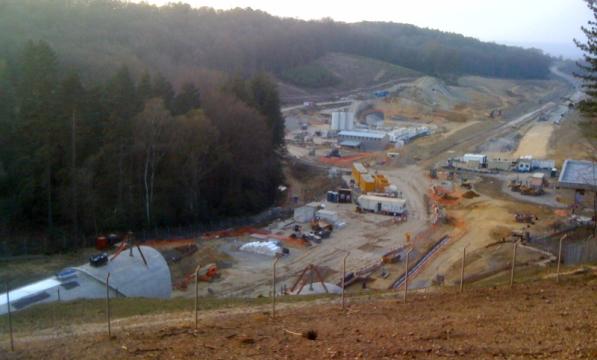MPs challenge flawed national transport modelling

Following oral evidence given by CTC to the Transport Select Committee in December 2013, MPs have called on the Department for Transport to open the National Transport Model for wider scrutiny.
CTC welcomes the intervention from MPs, although the Committee could have gone further in outlining some of the problems with the model.
The model's predictions for a 43% increase in traffic on main roads have stimulated the plans for spending tens of billions on new roads over the next decade or so.
However, that predicted increase runs contrary to recent falls in traffic levels, and expressly rules out future changes in transport policy. It's a bit like realising you are about to walk into a wall and, instead of altering course, asking someone to build an expensive new doorway so you can carry on walking straight ahead.
This (or a future) government could decide to take a radically different approach to vehicle traffic - heavily taxing or restricting personal motor traffic and massively subsidising public transport, walking and cycling. Such a policy would mean lower growth in traffic, obviating the need for major increases in road capacity.
MPs have endorsed CTC's position that the National Transport Model needs a thorough overhaul. Currently this crucial tool is leading to decisions that may condemn us and future generations to car-based sprawl and huge new roads, rather than bike-based local trips in traffic-constrained town centres."
Chris Peck
CTC Policy Co-ordinator
The model also proposes future trajectories for cycle use, and it is these forecasts where CTC has greatest concerns, which have been outlined in previous articles, and in the evidence CTC submitted to the inquiry.
In January, CTC had a useful meeting with the Department in which they agreed to run the model with a more ambitious target for cycle use, using any proposed objectives for cycle use in the forthcoming Cycling Delivery Plan - a major breakthrough.
However, CTC also believes that opening up the Model should mean that the parameters which dictate why any given future trip is made by car, or by bike, is scrutinised and refined in more detail.
Presently this process is very simplistic; people are perceived as only cycling or walking if they can't afford to drive: any increase in wealth therefore leads to a reduction in cycle use for all but the shortest journeys. CTC has explained that, in reality, cycling is becoming more and more a lifestyle choice for many people who could easily afford a car, but choose not to for health reasons, or because cycling is actually faster in urban areas.
Unfortunately the MPs' report makes no mention of the crucial issue of making sure that major roads and resurfaced roads are "cycle-proofed". Although the government has ostensibly committed to cycle-proofing, this is proving problematic to implement when it comes to individual schemes.

